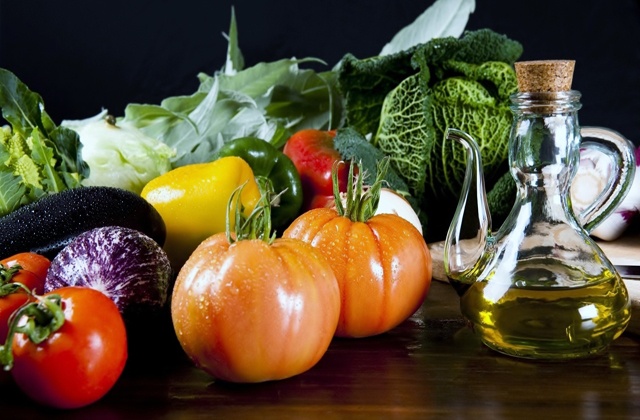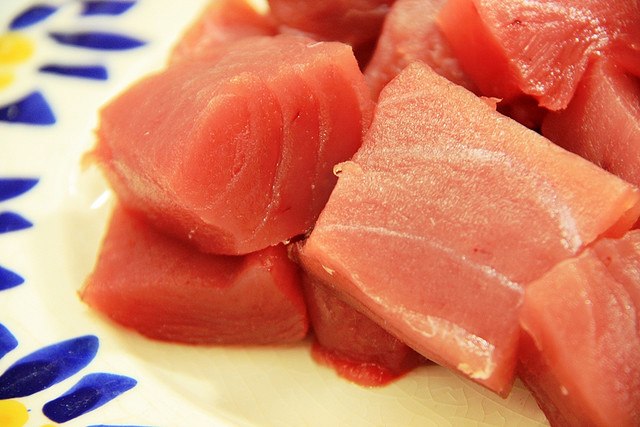
The Mediterranean Diet, An Intangible Cultural Heritage: 10 Tricks For A Healthy Food Model
The Mediterranean diet has long been recognised across the world for its quality, richness and wholesomeness. Now UNESCO has decided to designate it as an Intangible Cultural Heritage of Humanity, giving a new impetus to this globally known dietary approach. Spain, Italy, Morocco, Greece, Cyprus, Croatia and Portugal are the inheritors of centuries of culinary tradition that have helped create this truly unique and special culinary approach and lifestyle. Below we’ve collected the ten most important components that make the Mediterranean approach to the palette the source of health and wellbeing.
1. Olive Oil
Known worldwide as “liquid gold”, olive oil is the primary fat used in the Mediterranean diet. With it, we are provided with a food rich in Vitamin E, beta-carotene and monounsaturated fatty acids that have cardioprotective functions. Most dishes are prepared with this olive treasure, which has endured over the years to become a hallmark of the Mediterranean region.
2. Fresh Products
It is very important to use fresh and seasonal produce to create our Mediterranean recipes, especially when it comes to fruits and vegetables. This is due first to the taste of these ingredients and secondly because they will provide a greater number of nutrients when eaten at the right time. The land is very fertile in countries who follow this diet and many families even have their own garden where they get their food.
3. Blue Fish
Among its many treasures, the Mediterranean boasts a huge variety of fish. It is very common to eat seafood at least twice a week because its fat, although animal, is very similar to plants and can help to prevent heart disease. If you want to get to know authentic Mediterranean delicacies, seafood is very important to include.
4. Vegetables
Fruits, vegetables, legumes, mushrooms and nuts are consumed in abundance as a part of the Mediterranean diet and provide the main source of vitamins, minerals and fibre for our body. For generations, people who have followed this model have led healthy lifestyles. If you want to follow the Mediterranean diet, it’s important to eat these at least five time a day.
5. Breads and Cereals
Just as your car needs gas to get moving, human beings need enough carbohydrates to carry out everyday activities. Breads and cereals should be a part of your daily diet. In this regard, pasta and rice are the most well known ingredients in the Mediterranean Basin and have become important components in a wide-range of delicious dishes. Have you tried Italian pasta? Spanish paella? Any dish you can think of will benefit from the addition of these components?
6. A Glass of Wine
A Mediterranean lunch custom is a glass of wine. Studies have shown that, if consumed in moderation, wine can be very beneficial for the body, especially the heart. Additionally, the vines found throughout the Mediterranean are of the utmost quality, offering exquisite red wines. If you come from Spain, Italy, Portugal or Greece, wine making is part of the local tradition.
7. Milk Products
To maintain a state of robust health, it is essential to consume dairy products on a daily basis. Calcium provided by milk is essential for our body, as well as strengthening bones. It also helps make delicious cheese that has become a well known feature through the Mediterranean Basin. For this reason, you should not miss out on “cured Manchego” in Spain. It is also important to try a selection of the famous and creamy Greek yoghurt.
8. Red Meat
Another healthy habit of this Intangible Cultural Heritage diet is the moderate use of red meat. This food can seriously harm your health if consumed excessively. In Mediterranean countries, little of this is eaten and if it is, it is usually in the context of a stew – part of the recipe but not as a main dish.
9. Cooking Techniques
The Mediterranean diet is not just about food, but also about the recipes and culinary techniques that have been passed down from generation to generation. The style of cooking is as essential to the ingredients used. This includes putting olives in a pottery bowl rather than a plastic one, preparing vegetables with a wooden spoon rather than an aluminium one. Every small detail can help enrich the Mediterranean lifestyle.
10. Exercising
Another important addition to the Mediterranean diet is a balanced mixture of nutrition and sports. Each person has different needs and capabilities, but body movement is essential.
Taking long walks can be a healthy habit that is easy to incorporate into your schedule throughout the Mediterranean region thanks to good weather that allows plenty of outdoor activity.
The Mediterranean diet is a complete lifestyle. It has been proven that this approach is healthy in many ways. In addition to helping your heart, it can lower the chances of cardiovascular diseases, diabetes and hypertension. Do not forget that the best way to care for your mind and body is through excellent food.



























Nice article its very helpfull thanks for sharing